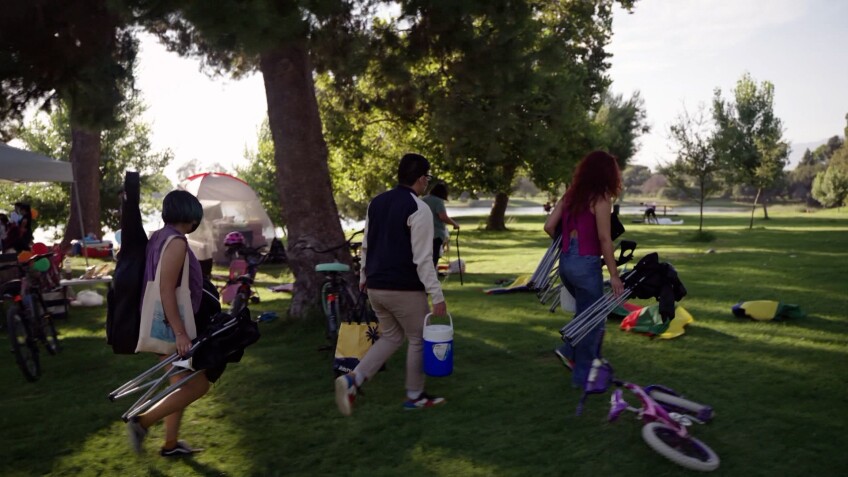Is Geography Destiny? How Environments Shape Our Lives

The idea that geography is destiny has a long and sordid history.
It originated as a claim among Greek philosophers, including Plato and Aristotle, that people from northern, colder — and whiter — regions of the world were superior to people from warmer, southern regions, with more varied, darker skin tones, because of the environments that shaped them. That idea has long been debunked.
But today, geography as destiny has come back as an explanation for patterns of inequality that are spatially distributed. That is to say that if you tell me your zip code, I can predict a great deal about you, your past, present and future. That is, your destiny.
The problem is that this correlation between geography and destiny, which exists statistically speaking, may obscure the most important fact here: both are determined by social factors. Most geographers, being social scientists, understand this. But the relationship between geography and human agency is worth unpacking, especially in an era of climate change, when human beings are recognized as a global environmental force.
This season of the "Earth Focus" public television documentary series presents three films that do just that. They may seem, on the surface, to reinforce the idea that geography is destiny. But the human drama that drives these stories shows how geography itself is shaped by people, and how people act so that their destinies might not be determined by their geographies.
These documentaries explore the environmental determinants of health: that is how our environment — our geography — shapes our health. It turns out, of course, that the environmental determinants of health are very closely related to the social determinants of health.
If you live in the low-income, densely packed neighborhoods of Southeast Los Angeles, hemmed in by highways, surrounded by freight trains and rigs spewing exhaust day and night, and with little access to green space for respite, you are quite likely to suffer from asthma, diabetes, cardiovascular disease and depression.
The same can be said if you live in the midst of the warehousing megacomplexes of the Inland Empire, the area around San Bernardino, where trains, planes, and 18-wheelers all come together to make sure shoppers’ next-day deliveries arrive on time, leaving a persistent layer of pollution behind.
These patterns are quite clearly geographical, but they are nothing if not determined by economic and social factors that result from the choices consumers make daily about what we purchase, as well as the ways in which businesses and investors organize those choices for us.
Out in the Inland Empire, residents are organizing to curb the pollution that is killing them from the tangle of railways, freeways, and airports that enable our packages to arrive on time. It is a classic environmental justice battle, David versus Goliath, community organizers versus Amazon. The documentary "Fighting for Air" chronicles one of their victories.
The organizers in the film do not believe that geography is destiny.
Neither do the doctors of South Gate, who know all too well the ailments that their patients are likely to suffer because of where they live. They are scientists, after all. They understand correlation and causation.
But they are also humanitarians, as the documentary "We Are Where We Live" clearly shows. They believe in human will, agency, and, yes, spirit, to struggle against so-called destiny. They are doctors. So they focus on patients, individuals. The perspective of individuals and their agency seems just as important as the community perspective we see in these stories. And in some ways, it is more compelling, perhaps because we identify with individual narratives more than we do with collective narratives in the battle against destiny.

"The fault, dear Brutus, is not in our stars," Cassius says in Shakespeare’s ‘Julius Caesar,’ "But in ourselves, that we are underlings." The doctors and patients of South Gate do not come across as underlings in "We Are Where We Live." Neither do the residents and environmental justice organizers of the Inland Empire in "Fighting for Air."
The protagonists in both of these stories make clear that while large structural forces do affect their health, "geography is destiny" is an idea that must be resisted, individually and collectively. It is an attempt to naturalize an unjust social order. This is not surprising, given the origins of the idea.
The third documentary in this year’s "Earth Focus" series, "For the Love of the Land," presents a slightly more difficult problem, conceptually. Climate change is radically changing environments that people have come to think of as stable homes. Navajo sheepherders are seeing their sources of water dry up. The forests and vineyards of Northern California are going up in flames. A Wisconsin farmer is driven to suicide because changing weather patterns are killing his dairy business.
Their geographies are changing before their eyes during their lifetimes. And this now seems like destiny. These changes — which we simplify as "climate change" — are caused by a human "we" that includes the protagonists in this documentary to varying degrees, but is also vast orders of magnitude larger than them. It includes all of us, as well as collective forces far beyond our individual control.
Is geography destiny?
Is the fault in our stars?
Or in ourselves?
And if the fault is in ourselves, can we change? Individually? Collectively?
This season of "Earth Focus" asks these difficult questions in different ways.
The answer seems to be tentative, provisional, struggling: "Yes, we can."
If you are having thoughts of suicide, call the National Suicide Prevention Lifeline at 1-800-273-8255 (TALK). You can find a list of additional resources at SpeakingOfSuicide.com/resources.






